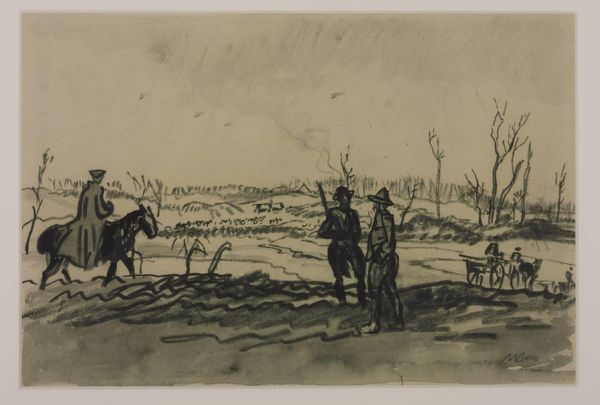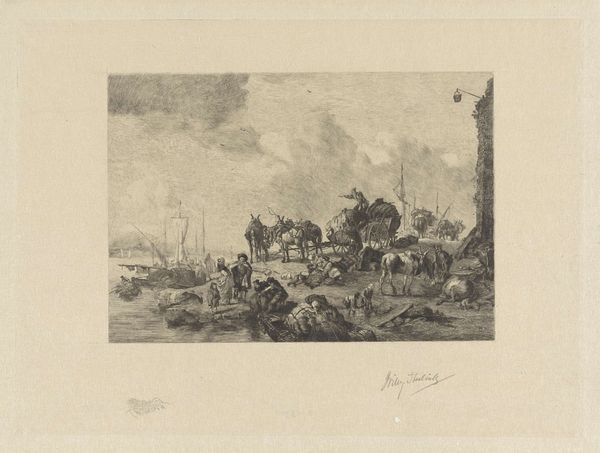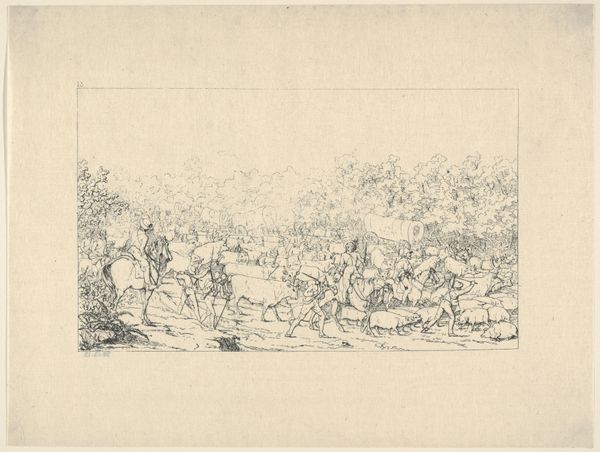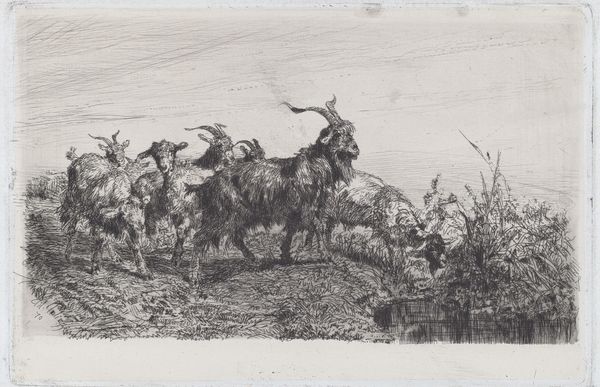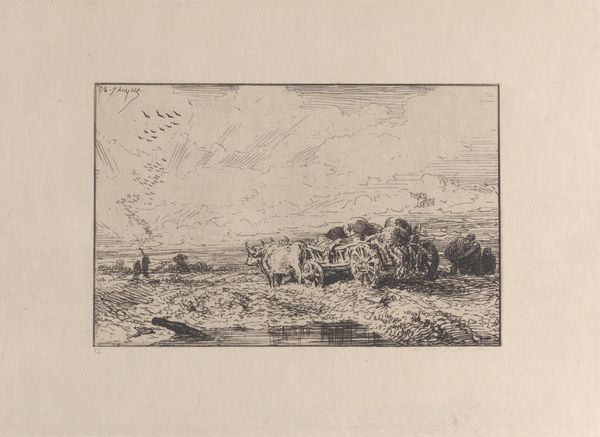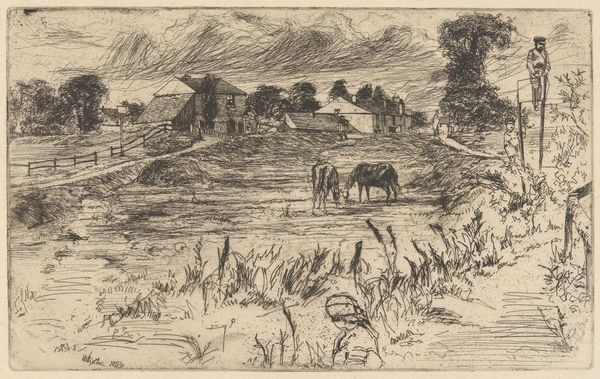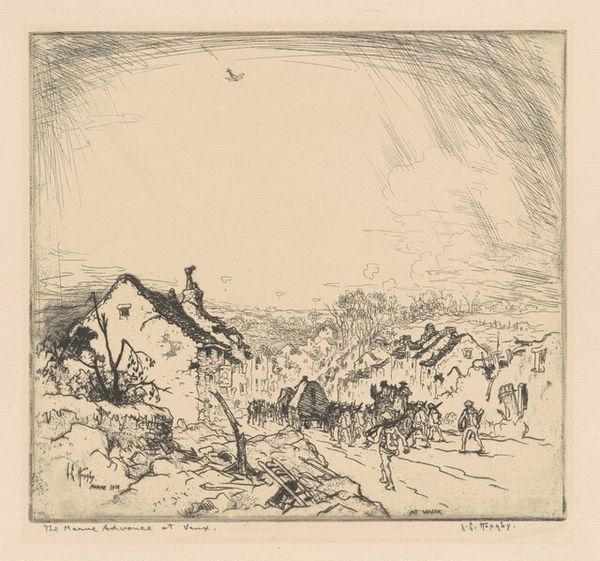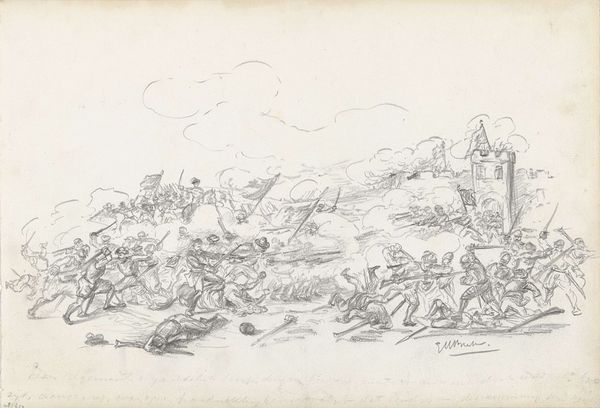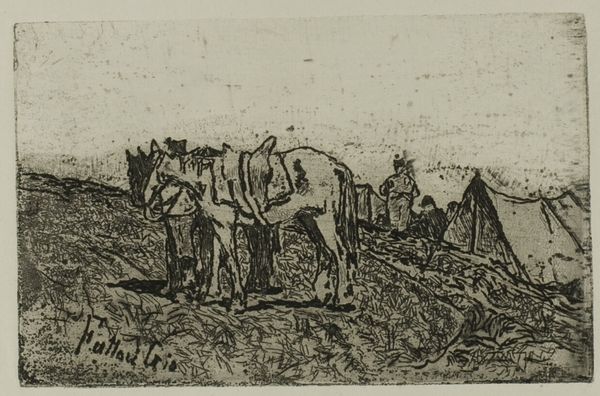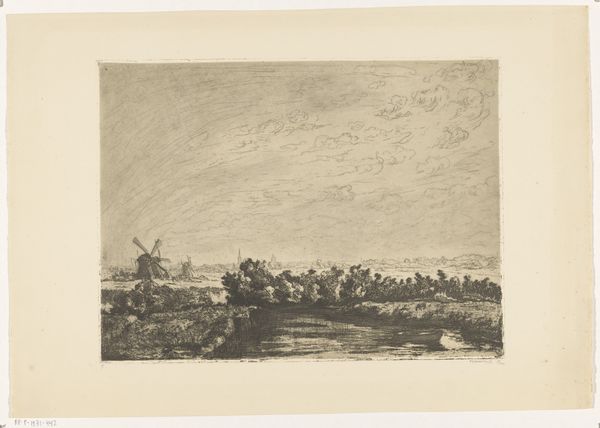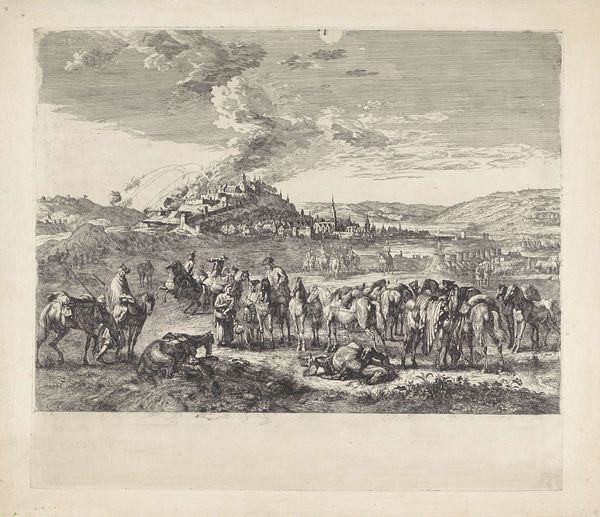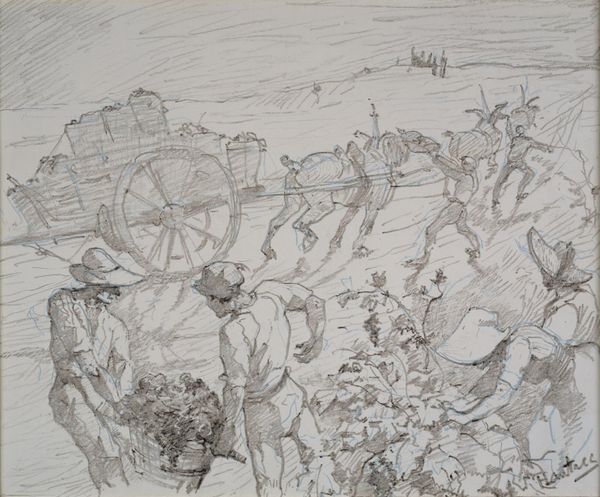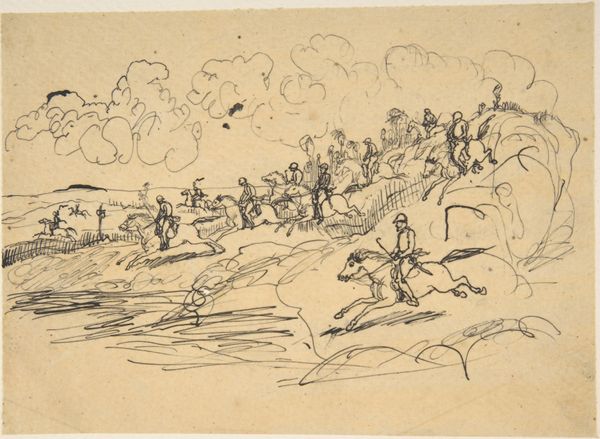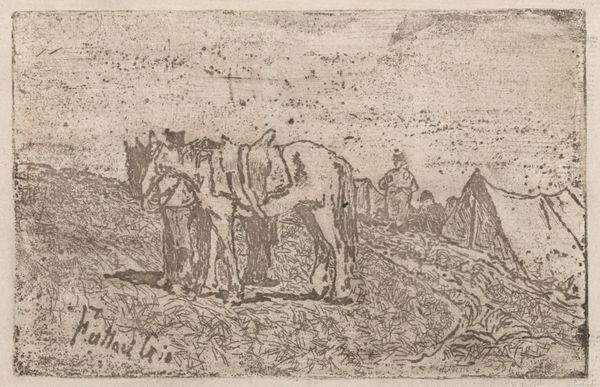
drawing, print, etching, graphite
#
pencil drawn
#
drawing
#
ink drawing
# print
#
pen sketch
#
etching
#
landscape
#
graphite
#
genre-painting
#
realism
Dimensions: image: 178 x 171 mm Sheet: 265 x 205 mm
Copyright: National Gallery of Art: CC0 1.0
Curator: This is Jeannette Maxfield Lewis's etching, "Celery Workers," created in 1945. The artwork depicts a field with workers harvesting celery. What are your initial thoughts? Editor: It feels incredibly raw. The scratchy lines of the etching give it a kind of weary energy. You can almost feel the humidity and backbreaking labor depicted. Curator: The technique of etching allows for very fine, detailed lines, crucial in conveying the texture of the field and clothing, even the weather. The print itself would have involved a lengthy process of acid etching and inking the plate. Editor: Absolutely, the work's creation mirrors the hard labor it represents, with the repetitive action of drawing the etched lines and layering. Do you know where this work was displayed? It seems to advocate for the working class and bring their concerns to gallery viewers. Curator: Without confirmed exhibition history, we can still speculate how viewers engaged with such social realism. This print would've been shown in public spaces such as libraries, union halls, or public schools in addition to more traditional museum contexts, given the date. Editor: I see these temporary, shanty-like structures, perhaps the celery workers were migrant laborers who traveled to make a living. How was her artwork circulated during that period? Curator: Her etchings would be available to be mass-produced via a printing press allowing the image to have broader circulation and influence, particularly post-World War II. She sold them in galleries but also taught at the local community college. This informs us of how she wanted her art accessible to the public. Editor: This artwork serves as an important window into a time of enormous change when many faced difficult labor conditions, yet their stories are too often unheard. Curator: Examining “Celery Workers” provides valuable insight into artistic techniques and the socio-political context of California agriculture during this time.
Comments
No comments
Be the first to comment and join the conversation on the ultimate creative platform.
